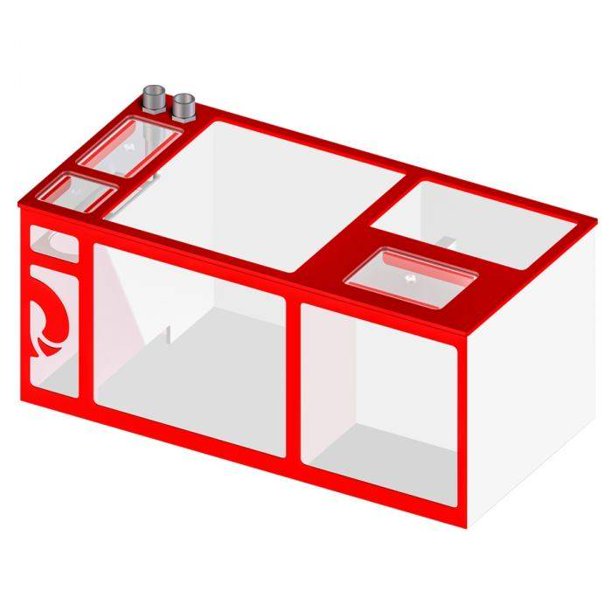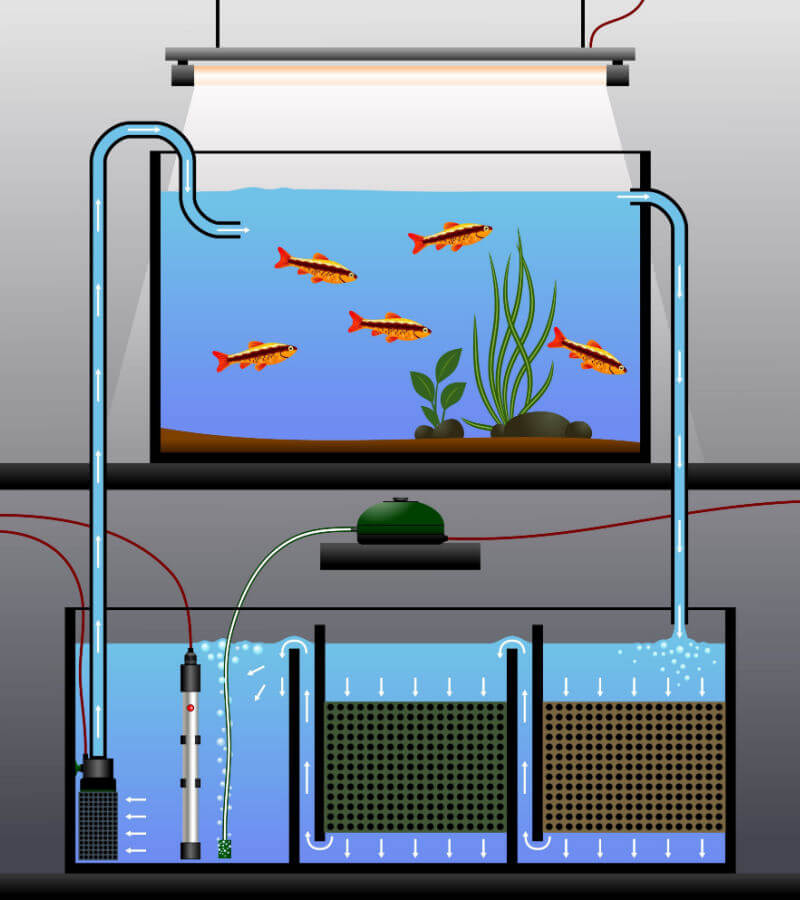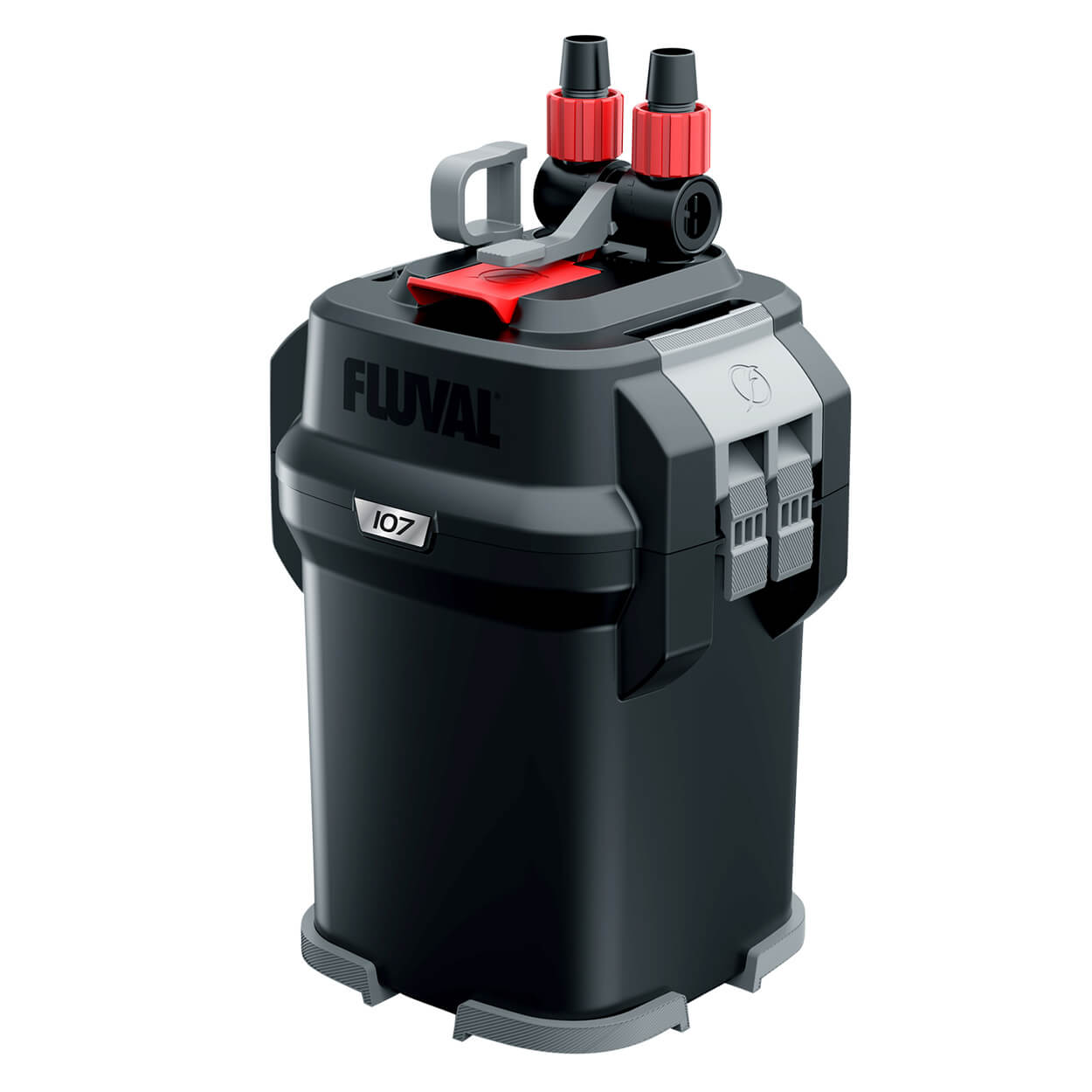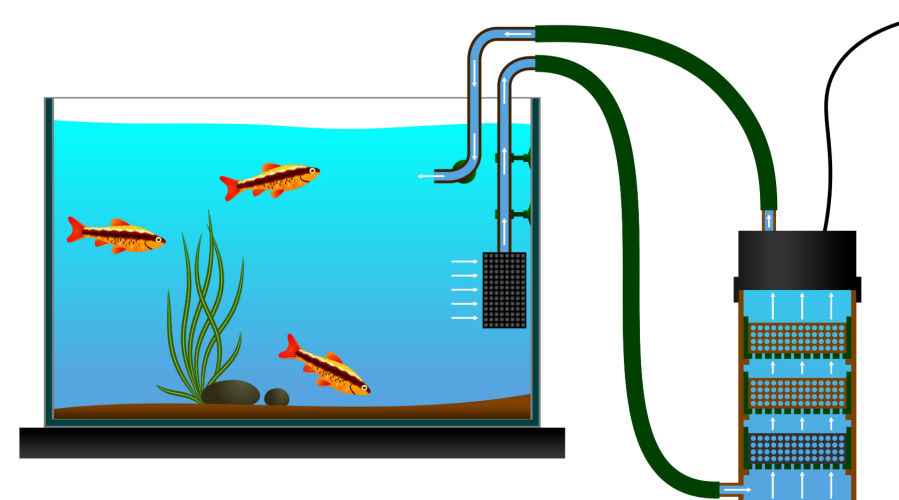Sump vs Canister Filter: Which Is Better?
Posted by on 3/14/2023
We use affiliate links and may receive a small commission on purchases.
Sumps and canister filters assist in purifying the water in our aquariums. Both of these appliances have different levels of popularity for each discipline in fishkeeping. Canister filters are a go-to for many freshwater hobbyists, while sumps play a much more important role in the saltwater community.
Fundamentally, both can be used in freshwater and saltwater tanks, but there are pros, cons, and different benefits for whichever you'll choose. In this post, we'll discuss the differences between sumps and canister filters, and we'll recommend which filtration method is suitable for both saltwater and freshwater aquarium hobbyists.
Sumps
Sumps are large containers typically placed inside an aquarium cabinet, directly underneath a display tank. Sumps are connected directly to a display tank via a drain pipe and return pipe. Sumps contain tank water, filtration equipment, and may also contain additional appliances or reserved spaces that serve as a refugium.

How They Work
Sumps work by drawing aquarium water out of the display tank via an overflow. Overflows are small boxes mounted to the top of an aquarium that features small inlets that allow water to naturally pass through.
Gravity then takes over, pulling the water from the overflow box through a drain pipe, into the sump. In the sump, water is then pulled from one direction to another thanks to a return pump, which is also responsible for "returning" the water back into your display tank. As your tank water passes from one end to the other in the sump, it gets filtered and often heated. Many hobbyists include additional appliances in their sumps, such as protein skimmers and bubble traps, all of which enhance water quality and improve the efficiency of your ecosystem.
Benefits for Saltwater Hobbyists
Sumps play an important role in maintaining a saltwater aquarium. They serve as a container to house and organize filtration equipment, and also expand the amount of water volume in your aquarium setup.
Saltwater fish are typically more sensitive to changes in water chemistry compared to freshwater fish. Having a larger volume of water reduces the rate at which you'll experience changes in water chemistry. With stability being one of the most important parts of the saltwater hobby, it's easy to understand the benefit of having a larger volume of water. This is especially important in reef tanks, where corals, such as blastos and torches require pristine and stable water parameters.
Benefits for Freshwater Hobbyists
There is little benefit for a sump in a freshwater aquarium setup. However, a sump may provide value for breeders, who wish to use the extra space as a refugium. Inside the refugium, they may choose to grow live fish food, such as microworms, bloodworms, and blackworms.
Although in many cases, breeders may opt for having a separate, dedicated tank for this purpose.

Canister Filters
Canister filters are most commonly found in freshwater aquarium setups. Popular brands such as Fluval and Eheim make some of the most reputable filters in the hobby. Typically, beginners new to fishkeeping will transition to a canister filter from a HOB (hang-on-back filter) when they're looking for something with a bit more power.
Freshwater planted tank enthusiasts may also prefer canister filters over HOB filters since they remove the filtration out of view from the aquarium. Canister filters are typically placed inside an aquarium stand, or underneath a display tank.

How They Work
Canister filters are typically cylindrical containers that house filter media. Beneficial bacteria grow on the filter media, which also catches waste and organic compounds. Typically every few months, a canister filter will be rinsed and cleaned, so that water can efficiently flow through the filter.
Water flows from the display tank into a canister filter through a filter intake, typically through a lily pipe. On its way to the canister filter, tank water may flow through an in-line heater, or for planted tank hobbyists - an inline CO2 diffuser. Once the water is pulled into the canister filter, it returns to the display tank through an outflow. Inside the canister filter, an electrically-powered propeller continuously runs. This propeller is responsible for pulling the water from the display tank and returning it to the display tank.

Benefits for Saltwater Hobbyists
The large majority of saltwater hobbyists will forego a canister filter in favor of a sump combined with a protein skimmer. There is a good reason for this, canister filters typically pull water from the middle or bottom of the water column, while overflow boxes with a sump pull water from the surface. In a saltwater aquarium, excessive proteins and waste float to the surface, so the benefits of an overflow box positioned on the tank's surface are quite obvious.
That doesn't mean a canister filter has no place in the saltwater hobby. Some hobbyists may combine a canister filter with a hang-on-back protein skimmer. In this setup, the HOB (hang-on-back) protein skimmer will skim the surface, and the canister filter will provide biological and chemical filtration. Keep in mind that you'll need to account for the canister filter flow rate, and you'll likely need to perform more frequent maintenance on the canister filter compared with a sump setup.
There are significantly more aquarium setup configurations in the saltwater aquarium hobby, and there is a wide range of opinions about which setup is best. Ultimately, choose whatever setup is best for the safety and health of your livestock, while factoring in things like cost, personal time, and maintenance.
Benefits for Freshwater Hobbyists
Canister filters are an appealing choice for freshwater aquarium hobbyists. They make your aquarium more aesthetically pleasing, since they are placed outside of your display tank, and also tend to be a bit more reliable compared to HOB (hang-on-back) filters. Canister filters are also capable of filtering large tanks. What you can achieve with one canister filter, may require 2-3 HOB (hang-on-back) filters.
Still, there are some drawbacks you should be aware of before deciding on a canister filter. Canister filters tend to be much more expensive than HOB filters. They're also more difficult to service. Algae and organic compounds may build up in the inflow and outflow tubing, and air that gets trapped inside the canister filter may occasionally need to be expelled. For those of us with nano tanks (smaller than 10 gallons) a HOB, or the Dennerle Internal Nano Corner Filter , is likely the more cost-effective, and easier-to-maintain option.
Conclusion
As you can see, both sumps and canister filters have seen usage in both the freshwater and saltwater aquarium hobbies. Recreating a naturally occurring ecosystem is no easy feat, but both of these appliances will help make the job a bit easier.
Now that you've learned some of the key differences, which do you plan on using for your aquarium setup? Let us know by commenting below or by visiting our community forum and marketplace where you can buy and sell anything related to the aquarium hobby.
December's Giveaways on Light Fish








